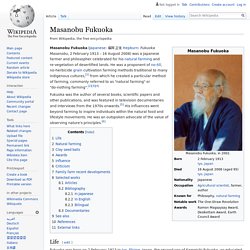

Long Flight? Here's How to Stay Healthy and Sane. HOLIDAYS Japan. JAPAN: Guides, tips, et. LOCATIONS - Japan. Samurai Gourmet. MUKIMONO (knives) Nattō. History[edit] Sources differ about the earliest origin of nattō.
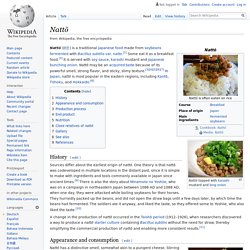
One theory is that nattō was codeveloped in multiple locations in the distant past, since it is simple to make with ingredients and tools commonly available in Japan since ancient times.[9] There is also the story about Minamoto no Yoshiie, who was on a campaign in northeastern Japan between 1086 AD and 1088 AD, when one day, they were attacked while boiling soybeans for their horses. They hurriedly packed up the beans, and did not open the straw bags until a few days later, by which time the beans had fermented.
Authentic Japanese product. Nambu “tekki” ironware – which is very Japanese yet highly stylish at the same time – seems to attract many foreigners.

Nambu ironware is said to have started around the middle of the 17th century, when the Nambu family, who were ruling the current northern part of Iwate prefecture, built Morioka castle and invited imoji and kamashi artisans from places such as Kyoto to have them make Buddhist altar articles, armor, and tea ceremony kettles as part of their plan to revitalize the city and promote cultural activities.
With the rich natural resources of the land and the support of the domain leaders, Nambu ironware soon became the local specialty of the area. It came to be cherished as a gift to feudal lords. The Nambu “tekki” iron kettle which is especially famous and popular, was originally made as a smaller, improved version of the tea kettle in the 18th century. Nambu ironware is not only beautiful and practical but highly durable as well. Accueil. Gaku ou l'art du Mukimono.
Connaissez-vous l’art japonais minutieux du Mukimono?

L’artiste japonais Gaku, qui le maîtrise à la perfection, présente ses élégantes sculptures culinaires sur son compte Instagram. Si l’origine de cette sculpture sur aliments n’est pas claire, ni provenant d’un pays d’Asie en particulier, le mukimono (littéralement « chose épluchée ») devint populaire et officiellement reconnu au Japon au XVIe siècle, durant l’époque d’Edo. Ce savoir-faire remarquable fait aujourd’hui encore partie de la formation de tout cuisinier japonais. Elle n’est pas sans faire penser à l’élégante technique du marquage des pommes très populaire à l’époque du Roi Soleil (1638-1715) et jusque vers la fin du 19e siècle en Europe et au Japon … Généralement géométriques, les motifs de mukimono de Gaku habillent les pommes, les radis daikon ou les bananes de mandalas et de formes abstraites, mais pas seulement. Langue de chat au thé Matcha : 'CHA NO KA' - Le blog de la-cuisine-au-the. J'ai découvert cette langue de chat en feuilletant un de mes magazines féminins.
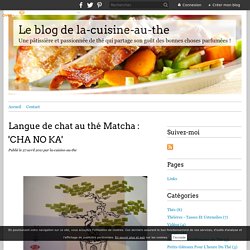
Et étant sur Paris pendant deux semaines au mois de mars, je suis allée au Bon Marché me procurer ces petits biscuits précieux made in Japon ! Restaurant Noel. Kanazawa. Kanazawa Kanazawa (金沢) [5] is a historic city in Ishikawa prefecture, Japan.
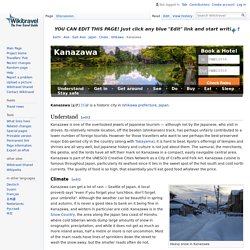
Understand[edit] Kanazawa is one of the overlooked jewels of Japanese tourism — although not by the Japanese, who visit in droves. Its relatively remote location, off the beaten (shinkansen) track, has perhaps unfairly contributed to a lower number of foreign tourists. However for those travellers who want to see perhaps the best-preserved major Edo-period city in the country (along with Takayama), it is hard to beat.
Climate[edit] Narrow Road to the Deep North. Narrow Road to the Deep North This article is an itinerary.
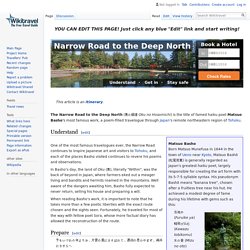
The Narrow Road to the Deep North (奥の細道 Oku no Hosomichi) is the title of famed haiku poet Matsuo Basho's most famous work, a poem-filled travelogue through Japan's remote northeastern region of Tohoku. Understand[edit] One of the most famous travelogues ever, the Narrow Road continues to inspire Japanese art and visitors to Tohoku, and each of the places Basho visited continues to revere his poems and observations. Tohoku. Tohoku Tōhoku (東北, literally "East-North") is the northeastern region of Japan's Honshu island.
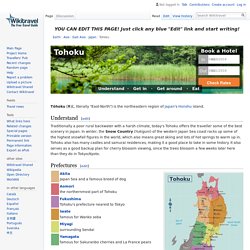
Understand[edit] Traditionally a poor rural backwater with a harsh climate, today's Tohoku offers the traveller some of the best scenery in Japan. In winter, the Snow Country (Yukiguni) of the western Japan Sea coast racks up some of the highest snowfall figures in the world, which also means great skiing and lots of hot springs to warm up in. Tohoku also has many castles and samurai residences, making it a good place to take in some history.
From the Source - Japan - Lonely Planet Food, Tienlon Ho, Rebecca Milner, Junichi Miyazaki, Ippo Nakahara. Shingō, Aomori. The Village in Japan Where they Believe Jesus Died. Matrix - ITA Software by Google.
SONGS. Speaking Japanese Fluently in 6 Months: 6 Steps to Success. Movies for taste of japan. Masanobu Fukuoka. Masanobu Fukuoka (Japanese: 福岡 正信, Hepburn: Fukuoka Masanobu, 2 February 1913 – 16 August 2008) was a Japanese farmer and philosopher celebrated for his natural farming and re-vegetation of desertified lands.
